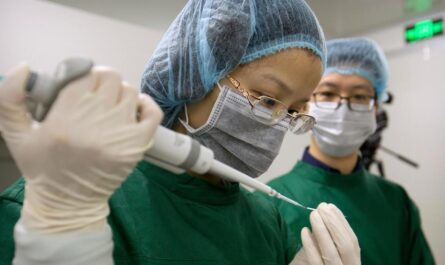According to a report released by the World Economic Forum (WEF), there is a significant gap between the treatment of men and women’s health, costing the global economy around $1 trillion annually. The report highlights the disproportionate focus on men across medical research, diagnosis, and treatment, leading to women spending a quarter more of their lives suffering from poor health compared to men.
Closing this gap could result in a 1.7 percent increase in per capita GDP driven by women, amounting to a $1 trillion boost to the global economy by 2040. The report, which was released during the WEF’s 54th annual conference in Davos, Switzerland, was created in collaboration with Swiss firm Ferring Pharmaceuticals and McKinsey Health Institute.
The report states that investing in women’s health is not only crucial for improving their quality of life but also for generating economic growth. For every dollar invested in women’s health, there is a projected return of three dollars in economic growth. A significant portion of this growth would come from sick women reentering the workforce.
The gender health gap currently leads to the loss of around 75 million years of life due to poor health annually, which amounts to a week per woman every year. The report highlights specific conditions that disproportionately affect women, such as endometriosis and menopause, which have traditionally been under-studied. Addressing the inequities surrounding these conditions could contribute $130 billion to global GDP by 2040, estimates the report.
Furthermore, the report reveals that women are often diagnosed later than men for 700 different diseases, and it takes them an average of two and a half years longer to be diagnosed with cancer. Even treatments that are commonly prescribed, such as asthma inhalers, have been found to be less effective for women than men.
Shyam Bishen, the head of WEF’s health care division, emphasizes that investing in women’s health should be a priority for every country. Not only does it improve women’s quality of life, but it is also one of the best investments a country can make for its society and economy. Bishen further announces the launch of the Global Alliance for Women’s Health by WEF, with a pledge of $55 million to support women’s health initiatives.
In conclusion, addressing the inequalities in women’s health has the potential to not only improve the well-being of individuals but also boost the global economy by $1 trillion. Closing the gender health gap requires a focus on research, diagnosis, and treatment tailored to women’s specific needs. By investing in women’s health, countries can create positive societal and economic benefits that will contribute to the overall well-being of their populations.
*Note:
1. Source: Coherent Market Insights, Public sources, Desk research
2. We have leveraged AI tools to mine information and compile it




